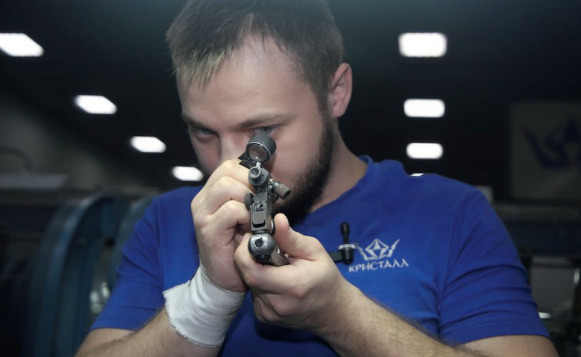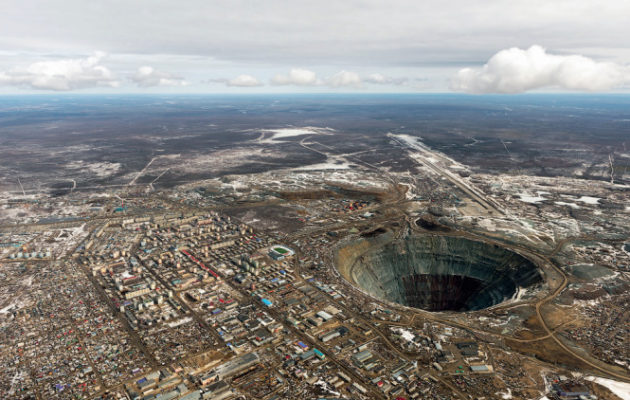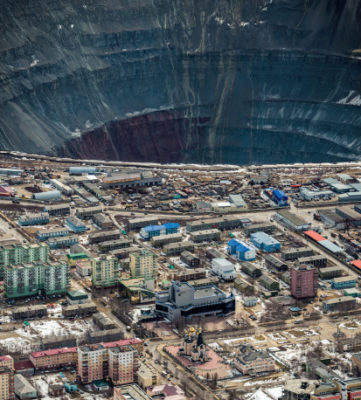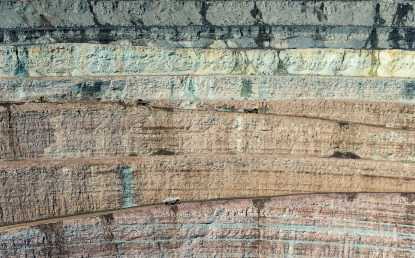Is the jewellery industry doing enough?
As Russia’s devastating war on Ukraine drags on, the question of Russian diamonds becomes a legal and moral quandary for everyone in the supply chain.
Almost all Russian diamonds come from Alrosa. The company produces the majority of the world’s rough diamond and 90 percent of Russia’s rough. It is responsible for 28 percent of global supply. The miner is one-third owned by the Russian Federation. Another third is controlled by regional governments such as the Russian republic of Yakutia where many of its mines are located.

Alrosa CEO Sergei Ivanov
Alrosa’s corporate leadership has close ties to the Kremlin. The company and its chief executive, Sergei Ivanov, were personally targeted by US sanctions. Ivanov’s father, Sergei Borisovich Ivanov, is one of Russian president Vladimir Putin’s closest allies and was formerly a KGB colonel general, a Russian minister of defence and a Putin chief of staff. Alrosa is a major source of income for its state-owned shareholder. The company reported sales of $4.16 billion in 2021 with a net profit of 91 billion rubles (AUD $1.2 billion).
Blood Diamonds and Global conflicts
And literally overnight, the Russian gems have become conflict diamonds.
Christine Villegas, director of the Mines to Markets program at Pact, a development NGO, says that Russian diamonds do not fit the narrowest industry definition of ‘conflict diamond’ and worries that some players in governments and the industry will continue to trade based on this ‘loophole’.

Alrosa
The Kimberley Process (KP) says the phrase refers to diamonds which are used to fund rebel groups — not, specifically, nations that invade other sovereign nations — but they clearly fit the spirit of the term, says Villegas.
“They’re funding an armed conflict against a peaceful neighbour, by a state actor,” she said. “These things take time to settle on new definitions. But the silence is striking – and it’s hard not to presume it’s because much of the industry is hoping that this goes away or it’s forgotten.”
Many major industry groups have not yet issued statements on whether responsible buyers should continue buying Russian diamonds.
Sanctions
On 11 March, US president Joe Biden issued an executive order restricting the import of Russian diamonds into the US. A day later, a clarification was issued. The ban was limited to the US importation of Russian rough diamonds and diamonds polished in Russia. The order placed no restrictions on the US importation of polished diamonds sourced from Russian rough but polished outside Russia.
Key industry figures, such as Martin Rapaport, founder of RapNet, believe this will do nothing to halt the flow of Russian gems.

“The sanctions – unless they deepen – are not going to affect the normal business,” he said, in a presentation to the industry. This is because the vast majority of Russian stones are exported rough. Most will then progress through the system to India, which cuts and polishes 90 percent of the world’s diamonds, meaning polished diamonds can be imported to the US as an Indian product, not a Russian one.
Government officials in India have received promises from Russia that the sanctions will not affect the flow of rough. Colin Shah, chairman of the Indian government’s Gem and Jewellery Export Promotion Council, told the India’s Economic Times that “Alrosa has assured us that they are running their business as usual … They will be fulfilling all their obligations to their clients in any part of the world,” he said.
As for other governments around the world, the EU and the G7 (US, UK, France, Canada, Italy, Japan and Germany) have all indicated that tougher sanctions would be imposed on Russia, including the prohibition of jewellery and diamonds.
Australia has also announced sanctions which will affect Russian mining companies and the dealings of 33 Russian oligarchs and prominent businesses. The Australian ban focuses mainly on fuel and energy products and makes no mention of diamonds.
But will they be enough?
The various sanctions do not prevent Russia from selling its diamonds. In fact, a report on the Rapaport website confirmed that an Alrosa auction took place in mid-March and, despite the Russian banking system being excluded from the international money transfer system Swift, the diamonds were paid for via banks in the United Arab Emirates and Italy.
The Russian state, independently of the company Alrosa, has an enormous stockpile of diamonds known as the Gokhran. Historically, Russia has used the Gokhran to regulate the market, buying up excess and selling during shortages.

“They have, since the 1990s, been purchasing diamonds in order to manage the pricing,” says Dr Hans Merket, a conflict diamonds researcher at Belgium institute IPIS.
The Russian government holds periodic diamond auctions from the state stockpile with six such auctions occurring in the first half of 2021. Industry watchers have estimated that revenue from just one of those sales reached $140 million.
“It’s a state secret, how much diamond is in that stock,” Merket says. “If they would start selling those diamonds, that could be an important source of revenue.”
So, even sanctions targeted at Alrosa will do little to regulate the flow of Russian stones.
Letting business and the market decide
With governments declining to draw the legal and moral lines against Russian diamonds, the issue will be left to individual companies, industry bodies to decide. And, perhaps, pressure from the general public. But Alrosa remains a key source of diamonds for many of the world’s largest jewellers.
In the week after Russia’s invasion of Ukraine, Alrosa deleted its list of customers — usually proudly and prominently displayed — from its website. Archived versions of the list show over 50 companies with long-term contracts with Alrosa including US giants Signet Jewellers, Tiffany & Co. as well as Chow Tai Fook, Chow Sang Sang, KGK and many companies from India, Belgium and Israel.
At time of writing, only Signet Jewellers had issued a clear indication on its position on Russian diamonds. In a memo to suppliers the company stated that it had “halted all trade in precious metals and diamonds that originate from such sanctioned Russian sources, and you are therefore requested to stop supplying the same to Signet even though the country(s) in which you operate may not have imposed sanctions on Russian precious metals and diamonds”.
Luxury jeweller Tiffany & Co. faces a moral decision after it recently began disclosing the country of origin for its engagement rings, citing the importance of responsible sourcing. Its manufacturing arm currently buys stones from five countries — Russia, Canada, South Africa, Namibia and Botswana. In other words: Alrosa and De Beers. Tiffany & Co’s parent company, LVMH, has closed its retail operations in Russia.

The brands are caught between a diamond and a hard place. Russian gems are an integral part of their supply. They’ve all invested heavily in customer ideals of environmental and social responsibility. As the war continues, they will inevitably face backlash if they make any attempt to white-wash Russian diamonds. If they stay silent, the modern savvy consumer will see through that too.
Just as consumers are beginning to see the Russian influence on energy prices and fuel tariffs as good reasons to invest more heavily in renewables and electric vehicles, there’s a strong chance the Russian conflict diamond issue will drive consumers more strongly toward lab grown diamonds.
Villegas say the big industry players’ silence on the matter of Russian diamonds could affect the industry in significant ways for years to come.
“All the work that has been done over the years to try to turn the industry reputation around, and show meaningful progress towards diamonds that do good [could] be undermined,” she told The Guardian. “There’s been a deafening silence.”
Read below for related stories: